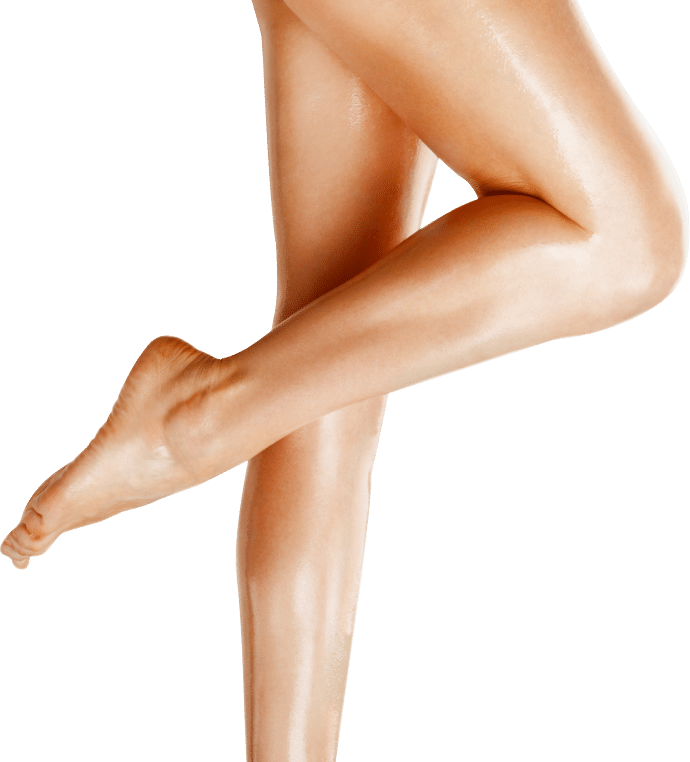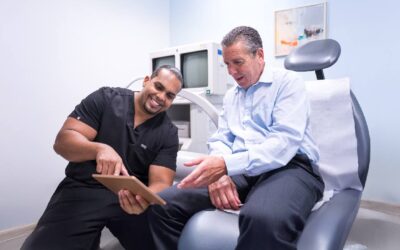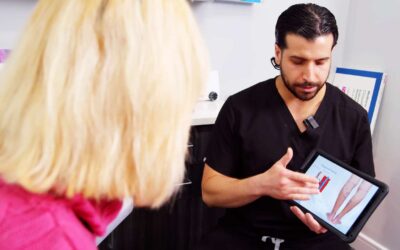What are the Treatment Options for Varicose Veins?
What are the treatment options for varicose veins?
In the not-too-distant past, varicose veins could only be treated with complex surgical procedures, such as vein ligation, vein stripping, and venous bypass surgery. Varicose vein surgeries are complicated procedures performed under general anesthesia, and they generally involve hospitalization and downtime. Varicose vein surgeries also carry a relatively high risk of infections and deep vein thrombosis.
However, thanks to recent technological advancements, varicose vein surgeries have been replaced by minimally invasive varicose vein treatments. Minimally invasive treatments are in-office procedures performed under local anesthesia. They cause minimal pain and discomfort, and they usually conclude within an hour with no downtime. The risk of complications is negligible, and they have a nearly perfect success rate.
The state-of-the-art vein treatment clinics in New Jersey only provide minimally invasive spider vein and varicose vein treatments, such as radiofrequency ablation, endovenous laser ablation, venaseal, clarivein, sclerotherapy, and ambulatory phlebectomy. Below, we provide an overview of your treatment options for varicose veins.
Radiofrequency Ablation
Radiofrequency ablation is a minimally invasive treatment for chronic venous insufficiency, the root cause of varicose veins. During the procedure, the vein doctor administers local anesthesia and makes a small incision on the skin’s surface. The vein doctor drives a catheter through the incision and into the diseased vein. Once it’s lodged in place, the vein doctor injects tumescent anesthesia to ensure comfort and activates the catheter, thereby generating radiofrequency energy to collapse the diseased vein. The accumulated blood reroutes into healthier leg veins, restoring effective blood circulation into the heart.
Endovenous Laser Ablation
Endovenous laser ablation is a minimally invasive treatment for chronic venous insufficiency, the root cause of varicose veins. During the procedure, the vein specialist administers local anesthesia and makes a small incision on the skin’s surface. The vein doctor drives a laser fiber through the incision and into the diseased vein. Once it’s lodged in place, the vein doctor delivers tumescent anesthesia to protect the surrounding tissues and minimize discomfort. Finally, the laser fiber is activated to deliver laser energy, collapsing the diseased vein. The accumulated blood flows into healthier leg veins, restoring effective blood circulation.
VenaSeal
VenaSeal is a minimally invasive procedure for chronic venous insufficiency, the root cause of varicose veins. The vein doctor injects an FDA-approved, medical-grade adhesive into the diseased saphenous vein under ultrasound guidance. The vein glue seals the diseased vein’s walls, allowing the accumulated blood to flow into healthier leg veins, restoring effective blood circulation to the heart. The diseased vein gradually hardens and becomes scar tissue, which is eventually metabolized by the body. VenaSeal is an extremely new procedure, so it’s not yet covered by all insurance plans.
Mechanochemical Ablation
Mechanochemical ablation, also known as ClariVein, is a minimally invasive procedure for large, twisted, and tortuous veins. The vein doctor makes a small incision on the skin’s surface after delivering local anesthesia. The incision is an entry point for a specialized catheter with a rotating tip. When activated, the catheter’s rotating tip damages the diseased vein’s walls while simultaneously delivering a sclerosant medicine, which fuses the diseased veins’ walls. The accumulated blood flows into healthier leg veins, restoring effective blood circulation.
Ambulatory Phlebectomy
Ambulatory phlebectomy, also known as microsurgery, is a minimally invasive procedure for superficial varicose veins. This procedure is generally performed after the primary vein treatment, i.e., once chronic venous insufficiency has been treated. The vein doctor administers local anesthesia and makes small incisions on the skin’s surface, through which the superficial varicose veins are removed. Ambulatory phlebectomy immediately improves your legs’ appearance. The incision marks will gradually fade away and become imperceptible.
Sclerotherapy
Sclerotherapy is a minimally invasive treatment for spider veins, i.e., the dense clusters of blood vessels that remain under the skin’s surface. This is a cosmetic procedure that removes the visible spider veins, but it doesn’t address the underlying chronic venous insufficiency. The vein doctor injects a medicine called sclerosant into the spider veins, turning them into hardened scar tissues eventually metabolized by the body. The spider veins gradually fade away from the skin’s surface in 2 to 3 weeks. You may need 2 to 3 sessions for optimal results.
What causes varicose veins?
Varicose veins are essentially dilated blood vessels with excessive blood accumulation, usually a result of chronic venous insufficiency. Venous insufficiency is a medical condition wherein the collapse of vein valves makes blood accumulate in your leg veins, leading to vascular dilation and the eventual formation of spider veins and varicose veins. As such, spider veins and varicose veins are the symptoms of chronic venous insufficiency. Effective vein treatments must always diagnose and treat vein disease before removing the spider veins and varicose veins.
What are the side effects of spider vein removal?
Sclerotherapy spider vein treatment is an extremely safe and effective procedure with a negligible risk of complications. The treatment itself is painless and comfortable, though you may experience a mild burning sensation when the sclerosant is injected into your spider veins. After the procedure, you may experience mild swelling, bruising, and lumping sensations. Furthermore, the spider veins will harden because of the sclerosant medicine, so it might seem like your spider veins are worsening before eventually fading away.
You can receive minimally invasive spider vein and varicose vein treatments at our state-of-the-art vein treatment clinics in New Jersey. We have offices in Clifton, Paramus, and Woodland Park, NJ.s


BOOK AN APPOINTMENT
Do you have any symptoms? Consult now with one of the Best Vein Specialist in New Jersey
NJ Vein Doctors
Meet our team of New Jersey Vein Treatment Specialists
Vein Treatments are covered by most major medical insurances, including Medicare. Call us today to verify your insurance for FREE >

Meet our Team of Top Vein Specialists in New Jersey
Contact us
CALL US
Speak instantly with one of our team members; they will answer any questions you may have regarding insurance coverage, booking an appointment and our vein treatment locations. (973) 946-8082
BOOK APPOINTMENT
Visit our Book Appointment page and instantly request an appointment at the New Jersey vein center. We offer Free Insurance Verification before your appointment.




